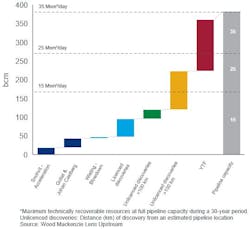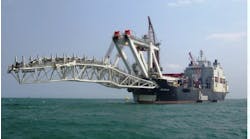Offshore staff
EDINBURGH, UK — A $5 billion export pipeline linking gas fields in the Barents Sea in Northern Norway to European markets could cut dependence on LNG, according to Wood Mackenzie.
The consultants’ "Can the Norwegian Barents Sea help solve Europe’s gas crisis?" report says the war in Ukraine has rekindled interest in the project in Norway. However, the costs of constructing and operating the 800-km, 15-MMsq m/d capacity line would have to be addressed, as these could make developing gas from fields in far north more expensive than alternative imports from new LNG developments.
However, Daniel Rogers, senior analyst with Wood Mackenzie, pointed out that gas from the area “offers a cleaner alternative to LNG and any proposed development would be carried out under strict Norwegian environmental controls.
The report adds that state funding of the pipeline, or the introduction of a new Carbon Border Adjustment Mechanism from the EU to encourage cleaner industrial production in non-EU countries on gas imports to Europe, would increase cost competitiveness.
“The carbon and socioeconomic argument for a pipeline—and further development of the basin—is strong, but it won’t happen without government support,” Rogers said. “However, if long-term European gas demand and prices fall faster than expected, this would put further pressure on the viability of the project.”
In addition, the report suggests a larger pipe might be needed to incentivize high-impact gas exploration in the Barents Sea to ensure continued long-term supplies.
Currently, Equinor produced gas in the Barents Sea from the Snøhvit Area fields for delivery via a pipeline to the Hammerfest LNG complex, which is set to remain at full capacity until the 2040s. There is no direct pipeline route at present for connecting gas resources in the region to the main Norwegian pipeline network to the south.
07.11.2023





